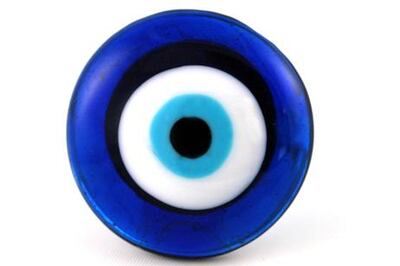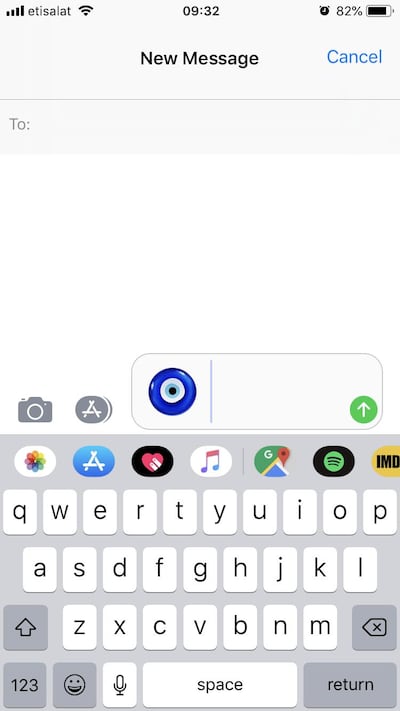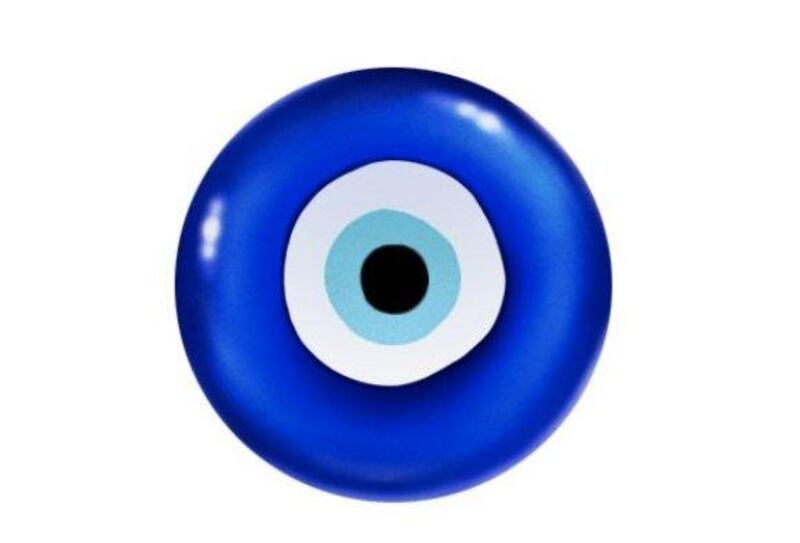The evil eye is, wisdom has it, everywhere. And so is the talisman that wards against it. Those royal-blue, glass pendants show up across the Arab region, from the Maghreb to the Gulf, and at points north from Spain to Azerbaijan to Pakistan. They’re on your friend’s earrings; hung up in your local cafe; adorning the wrist of a cousin recently back from a gap year abroad. And now, they’re online: there’s an evil-eye emoji.
The talisman is supposed to protect the bearer from the evil eye – which legend has it could stem from any minute source, from the jealousy of those around you to your own pride in assuming things are going all right for you. It's a little twist of old-world humility in an Instagram age.
The idea of the evil eye is impressively ancient. Researchers have found images of it in Sumerian cave drawings, as well as ancient amulets from 3000 BC in Syria, and it appears in Virgil, writing in Rome in the first century BC. Today, it's a common belief among Muslims – in particular, the notion that evil spreads from envy.
The blue glass trinket itself is thought to derive from the Ottoman Empire, which spread its version of the nazar, as it is called in Turkish, across the many lands it ruled. Globalisation has spread it further: you can buy evil-eye amulets in Camden Market in London and bazaars in Mexico City.

Now that it has spread to our online emoji lexicon, it has achieved a new level of international recognition. Indeed, it's one of the few culturally linked emojis – most are universally accepted hand gestures (for example, a thumbs-up or a finger pointing to something), thoughthere is a western bias in terms of the food and sports offered. Unlike the alphabet, which can be adapted to whichever language, the emoji lexicon has to be applicable to whomever, wherever, is texting (or, more likely, WhatsApping).

A group called the Unicode Consortium, initiated by a Google employee in 2007, oversees the emoji offerings and unifies them across texting platforms. They also function as a kind of gatekeeper – making sure potentially harmful emojis (such as guns) do not get representation, and that the little icons comprise women as well as men; people in hijabs and turbans; and different relationships. It's a progressive world view that suits the image of Silicon Valley and techno-adopting youth more generally as welcoming, forward-thinking people: dark-skinned as well as white-skinned thumbs-up? Yes, please.
Before the new emoji was introduced, life could be considered a minefield for the evil eye. "Your night looks so fun!" "Your son is so sweet!" "You guys look so happy!" Legions of old women must have shuddered at the thought of these jinxing compliments going answered. But now we can placate whatever bad luck lurks among us: a quick blue nazar and we can go on being happy forever (inshallah).
_____________________
Read more:
Why WhatsApp groups are the bane of my existence
How Facebook changed Instagram, and then the app changed our world
_____________________






